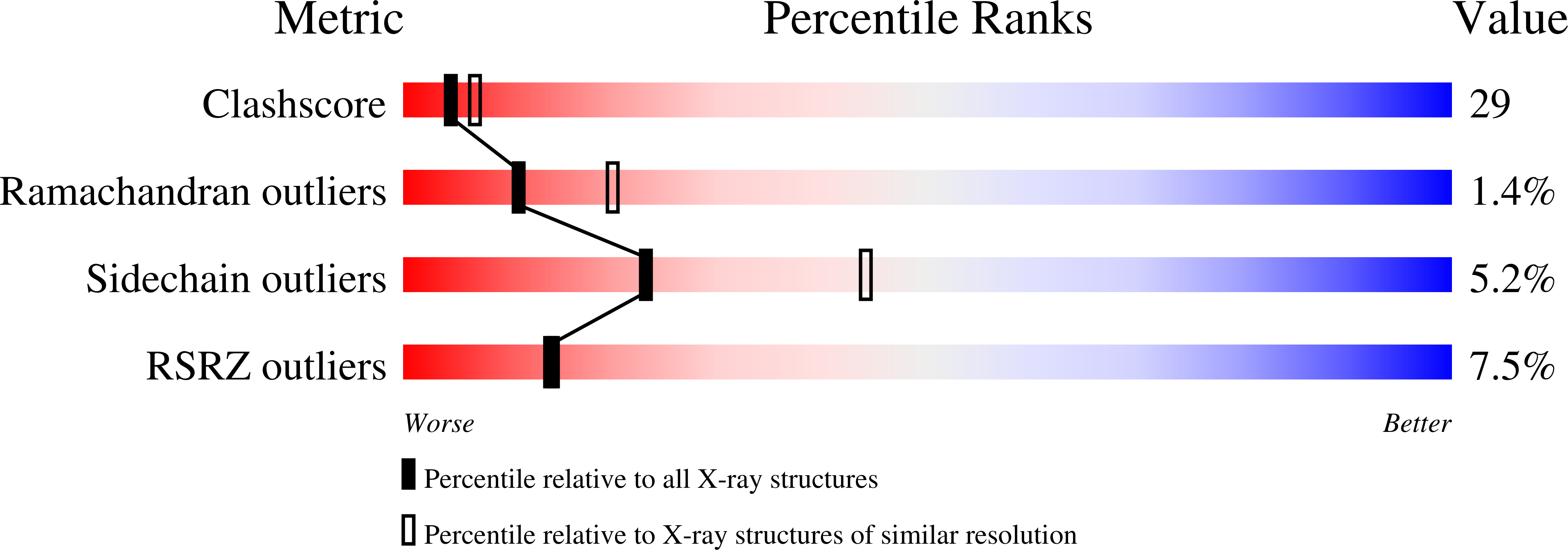Crystal Structure of a Monocotyledon (Maize Zmglu1) Beta-Glucosidase and a Model of its Complex with P-Nitrophenyl Beta-D-Thioglucoside
Czjzek, M., Cicek, M., Zamboni, V., Burmeister, W.P., Bevan, D.R., Henrissat, B., Esen, A.(2001) Biochem J 354: 37
- PubMed: 11171077
- DOI: https://doi.org/10.1042/0264-6021:3540037
- Primary Citation of Related Structures:
1E1E, 1E1F - PubMed Abstract:
The maize beta-glucosidase isoenzymes ZMGlu1 and ZMGlu2 hydrolyse the abundant natural substrate DIMBOAGlc (2-O-beta-D-glucopyranosyl-4-hydroxy-7-methoxy-1,4-benzoxazin-3-one), whose aglycone DIMBOA (2,4-hydroxy-7-methoxy-1,4-benzoxazin-3-one) is the major defence chemical protecting seedlings and young plant parts against herbivores and other pests. The two isoenzymes hydrolyse DIMBOAGlc with similar kinetics but differ from each other and their sorghum homologues with respect to specificity towards other substrates. To gain insights into the mechanism of substrate (i.e. aglycone) specificity between the two maize isoenzymes and their sorghum homologues, ZMGlu1 was produced in Escherichia coli, purified, crystallized and its structure solved at 2.5 Angstrom resolution by X-ray crystallography. In addition, the complex of ZMGlu1 with the non-hydrolysable inhibitor p-nitrophenyl beta-D-thioglucoside was crystallized and, based on the partial electron density, a model for the inhibitor molecule within the active site is proposed. The inhibitor is located in a slot-like active site where its aromatic aglycone is held by stacking interactions with Trp-378. Whereas some of the atoms on the non-reducing end of the glucose moiety can be modelled on the basis of the electron density, most of the inhibitor atoms are highly disordered. This is attributed to the requirement of the enzyme to accommodate two different species, namely the substrate in its ground state and in its distorted conformation, for catalysis.
Organizational Affiliation:
Architecture et Fonction des Macromolecules Biologiques-AFMB-UMR 6098, CNRS and Universités d'Aix-Marseille I et II, 31 Chemin Joseph Aiguier, F13402 Marseille Cedex 20, France. [email protected]














